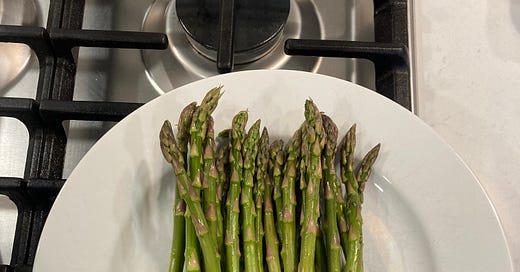It’s asparagus season, which means that the asparagus in the grocery, if not local per se, still came from somewhere relatively nearby, which means it’s fresher, lasts longer, tastes better, and is more affordable than usual. If you don’t like asparagus, but you’d like to like it… now is your chance!
Like most vegetables, asparagus is just begging for a saltwater bath and a good drizzle of butter to bring out its good side. (Olive oil + roasting is good too, but I actually prefer the boiling method— it infuses the entire vegetable with the right amount of salt, and the texture is more even and tender with boiling, too.)
You will need a pot with a lid, plus water, kosher salt, and butter—and you don’t really need to worry about amounts.
Steps 1-3:
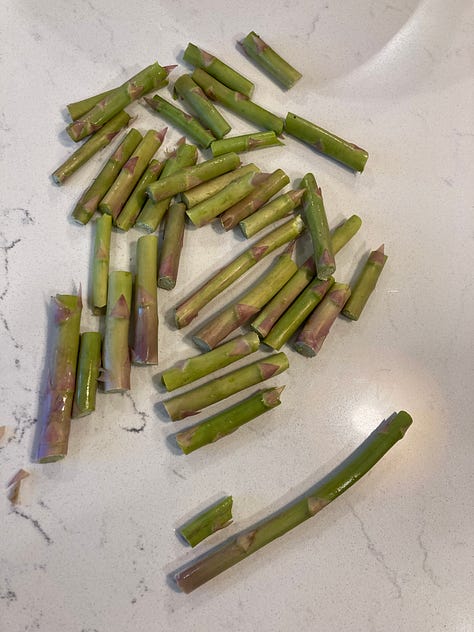
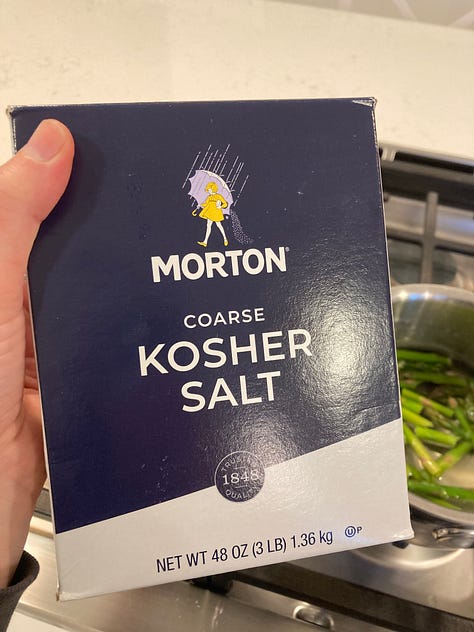
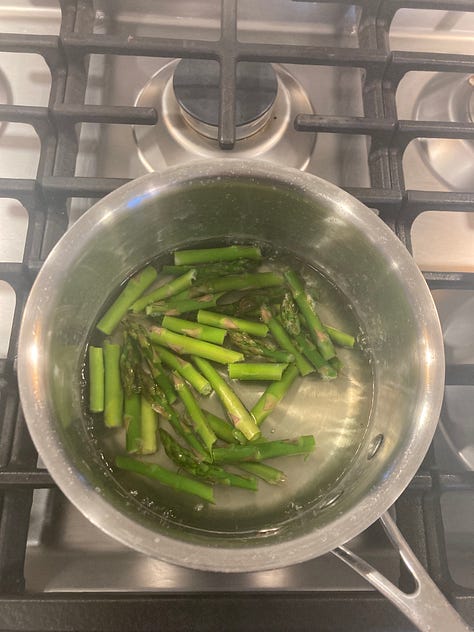
Step 4:
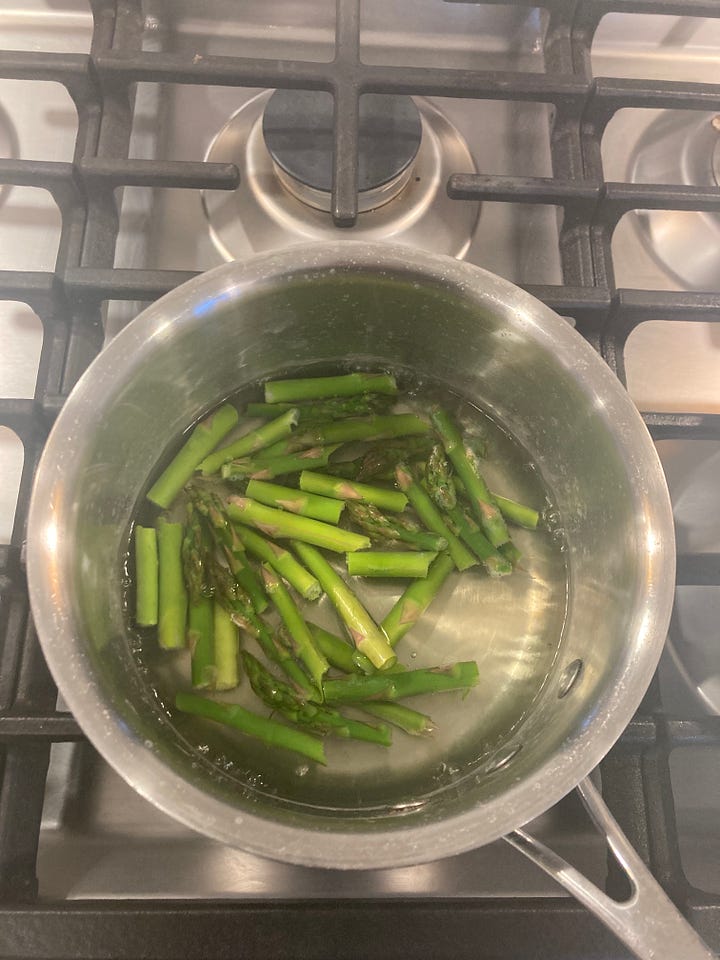
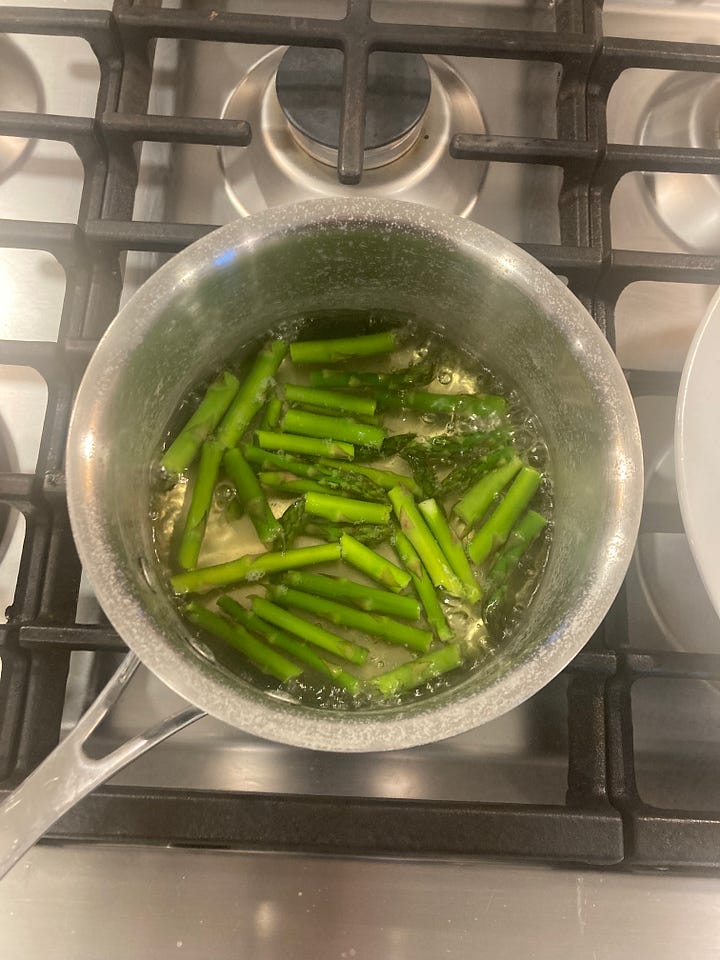
Step 5:
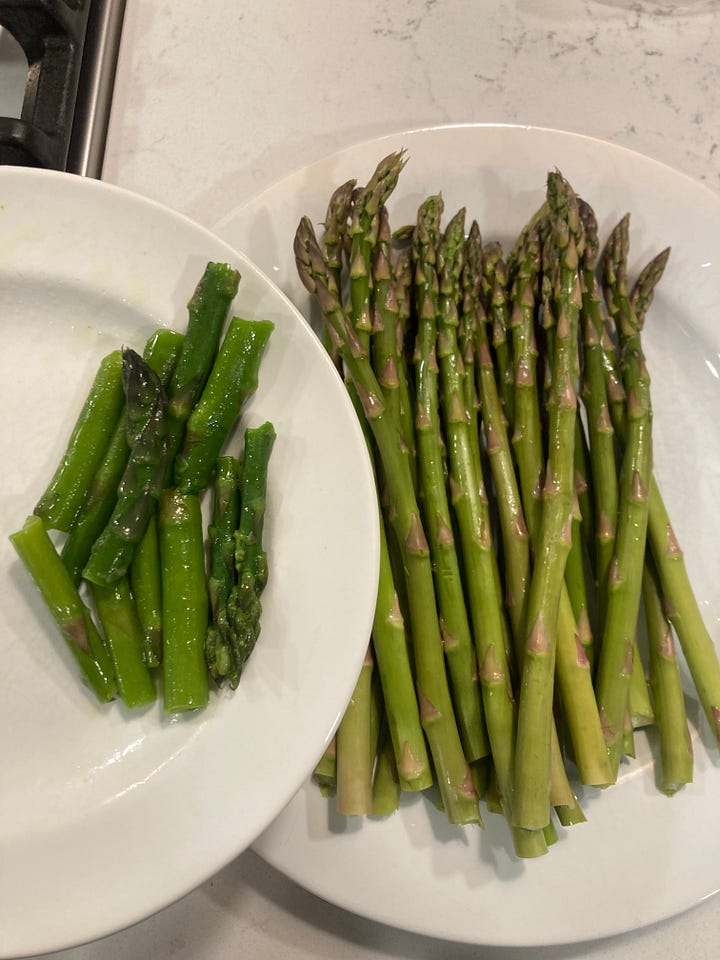
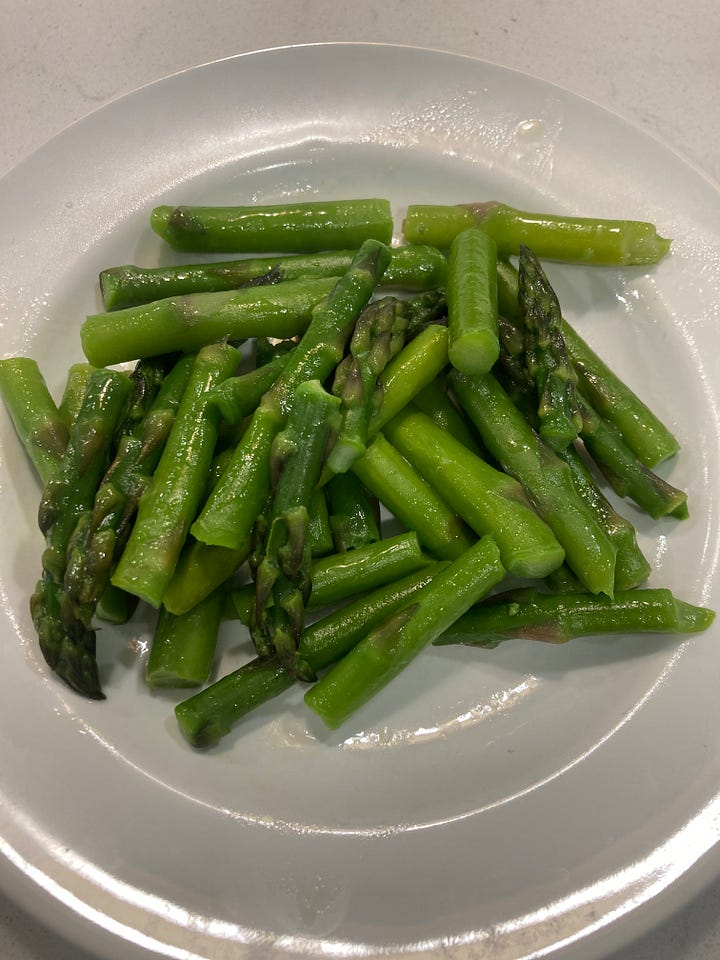
If you want your asparagus (or any green vegetable) to retain that perfect bright green, rinse it with very cold water (this is called blanching) for a minute, then drain and reheat when you’re ready to eat. Blanching is great if you’ve made a big batch and want the leftovers to look pretty, or if you’re cooking ahead for company. But if you’re like me, you’ll want to eat it right away, and you won’t necessarily care what shade of green it is!
How to enjoy eating asparagus (someday!) as a family: For kiddos to eat asparagus someday, they have to see it on the table frequently, and they especially need to see YOU enjoying it. Most importantly, they need to taste it when it tastes delicious. Whenever I’m offering a new vegetable to Noah, I’m fanatical about making sure that it’s the best bite possible— that it’s warm, not too hot or cold, and that it has plenty of butter and salt so that it has the highest likelihood of tasting good to him.
Asparagus in particular is really fun to eat with Noah. He has always liked it— I’ve been making it for him since he was a baby (see pics below— sob!) We like to “cheers” with some of the pieces before we eat them. He’s also into counting right now, so I might line up the asparagus spears and let him count them— really anything to help make it fun.
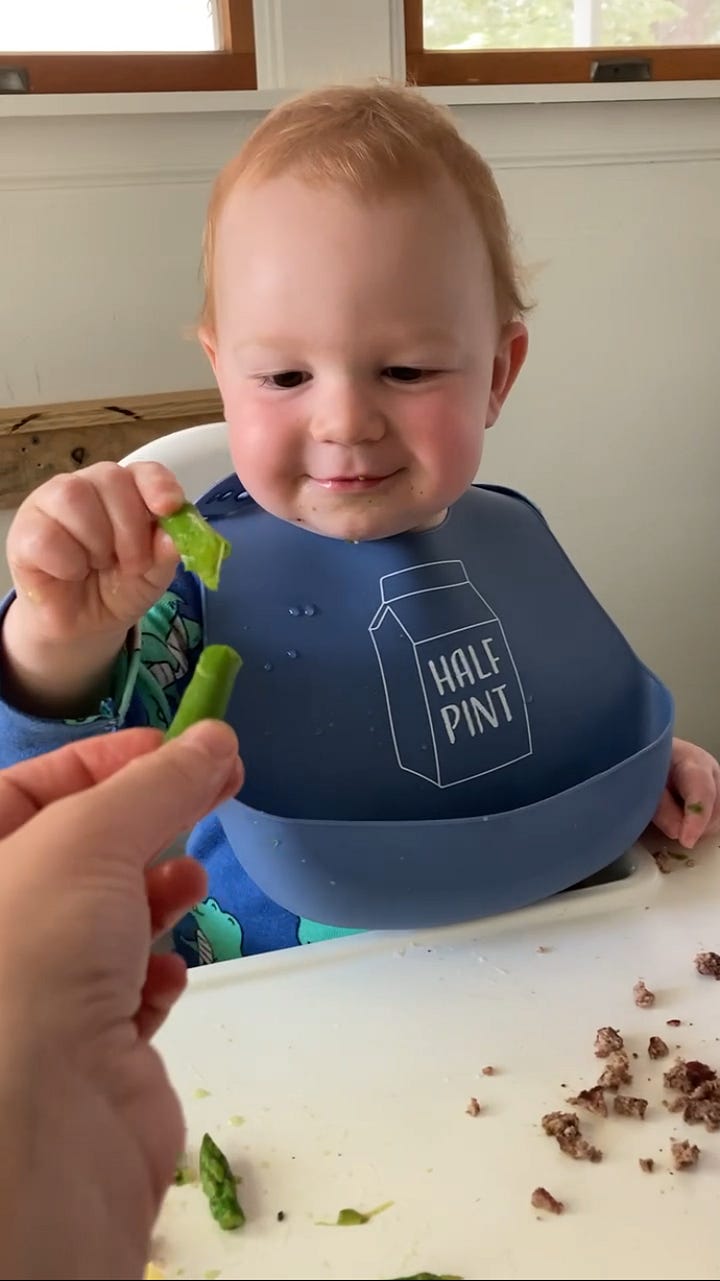

Side note: if you’re just starting to try making food fun for your kids, it might feel a little weird at first. But you don’t have to go overboard or do anything that feels forced or like a theater production. It’s just asparagus, for gosh sake’s. Anything little, like cheers-ing, that is lighthearted and silly can really add a positive association with that food in particular and with eating in general.
One more thing: I think we sometimes forget that there is more at stake than getting X food into our kids’ tummies. I think the biggest win we can have around raising good eaters is letting them experience joy and delight at the dinner table. Getting to that joy and delight will be unique to your family, of course. And I’m not always in what I’d call a delightful mood at dinnertime. But making mealtime fun when I can goes a long way towards smoothing out any disconnection or frustrations that have built up during the day, instead of making them worse.
So, if you make the asparagus, I hope it tastes great (if not, chuck it and try again next time, with another $1 bunch— another perk of cooking seasonally! Lower stakes!) But most of all, I hope you can enjoy it with the ones you love.


